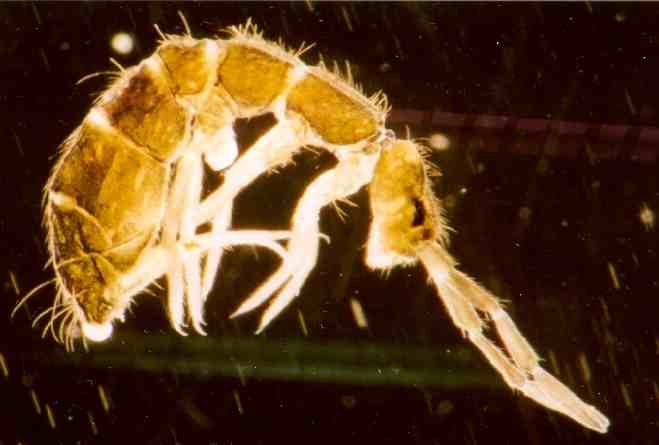- Entognatha
image_width = 240px
image_caption = Collembola ("Isotoma" sp.)
regnum =Animal ia
phylum =Arthropod a
subphylum =Hexapoda
classis = Entognatha
subdivision_ranks = Orders
subdivision =Collembola Diplura Protura The Entognatha is a class of
ametabolous arthropod s, which, together withinsect s, makes up the hexapods. Their mouthparts are entognathus, meaning they are retracted within the head. Entognatha areapterous , meaning they lack wings. The class contains three orders: Collembola (springtail s),Diplura andProtura . It is agreed that the hexapodous condition of these animals has evolved independently from that of insects,Fact|date=June 2008 and independently "within" each order.Fact|date=June 2008 The orders are not closely related, and so Entognatha is considered a polyphyletic group.Fact|date=June 2008These three groups, if united with the order
Thysanura , form the classApterygota .Morphology
These minute
arthropods are apterous or wingless, unlike some other orders of insects that have lost their wings secondarily (but are derived from winged ancestors). Their mouthparts are enclosed within a pouch in the head capsule, so that only the tips of the mandibles and maxillae are exposed beyond the cavity. This pouch is created in the embryo by a flap or lateral head sclerite near the mouth on each side of the head which fuses with the labium. Other differences with insects are that each antennal segment is musculated; in insects, only the two basal segments are. Sperm transfer is always indirect, and there isovipositor in the females. Most are sightless. Of the three orders, only collembolans possess eyes; nevertheless, many collembolans are blind, and even whencompound eye s are present, there are no more than eightommatidia .* Collembola have a ventral tube termed a collophore on the first abdominal segment. The collophore is involved in moisture absorption. On the third abdominal segment is the tenaculum that holds the furcula. The furcula is the "spring" for which the Collembola are given the name springtails.
* Proturans, also known as "coneheads" do not have eyes or antennae. They possess abdominal styli that are thought to be vestigial legs.
* The Diplura have a pair of caudalcerci , from which their name, meaning "two-tailed" is derived.
Wikimedia Foundation. 2010.

